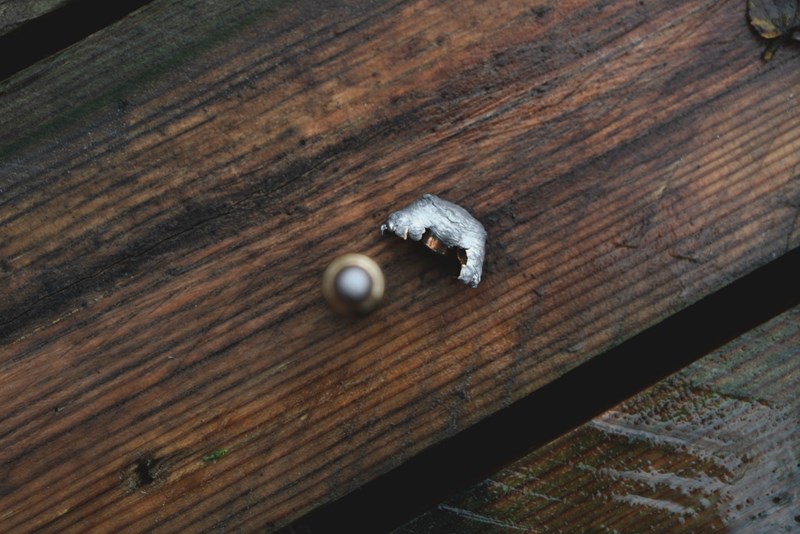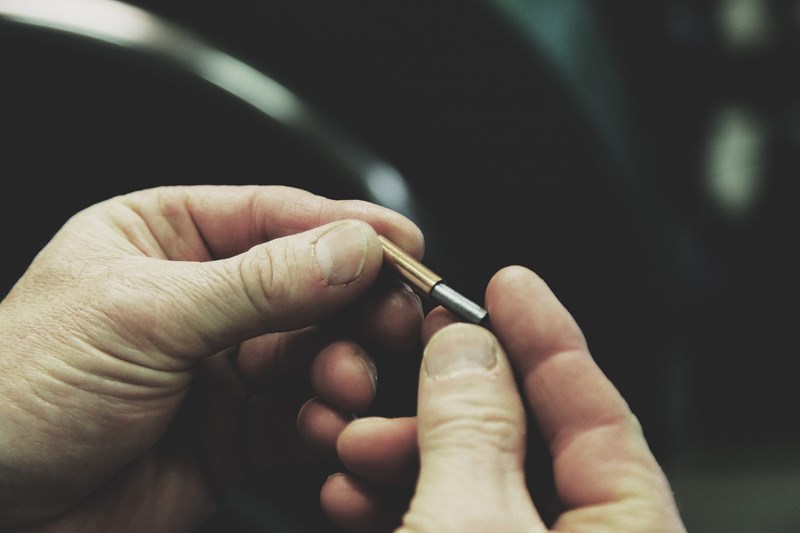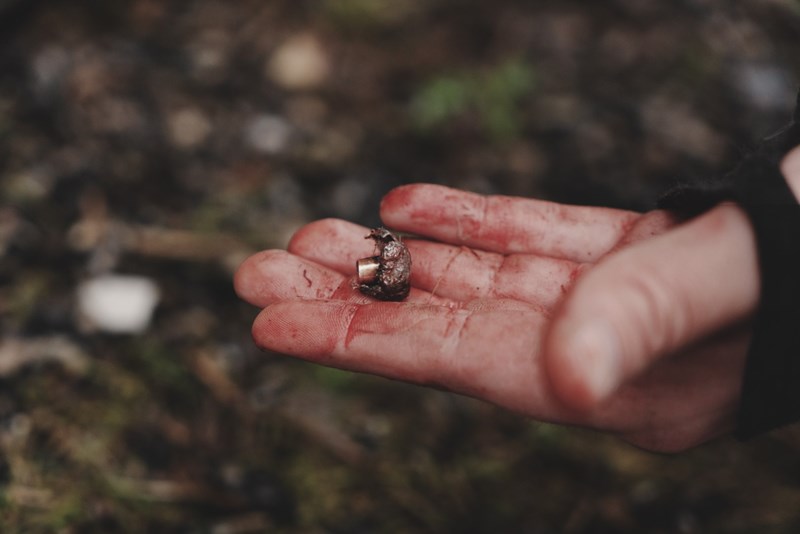
Norma Bondstrike 30-06 Springfield 180gr
Range
Wound Channel
Penetration
Stopping power

Oryx is a so-called bonded bullet, which means we are in the manufacturing process uses a highly advanced smelting process, which provides superior adhesion between the bullet's mantle and core. This means the best of both worlds; you have a rapid expansion through the exposed lead core at the top, but maintains a controlled mushrooming, deep penetration and a residual weight of over 90 %. What makes Oryx stand out from the crowd is that the front has internal cleavage zones and with a special technique the upper part of the tip is left unbonded. It is these details that differ Oryx from other bonded bullets and that gives it a wide range of applications in the most diverse hunting conditions.
Today, there is a growing range of bonded bullets on the market. The bonding itself can be done in various ways including electroprocesses and electrochemicals. The way you manufacture them is important, but the reason why you do it is even more important. The main reason for a bonded bullet is that it keeps the core and mantle from separating when the bullet penetrates the target. This is an advantage that helps the bullet to hold most of its weight which gives a deeper, straighter and more controlled penetration. A bonded bullet also has a documented effect of penetrating bones better, without deviating from its angle for that matter, unlike a traditional not bonded lead bullet.

But if these hunting bullets are so good, why aren't all of them bonded? An non-bonded bullet means that the bullet's core and mantle are not merged together. This means that when the bullet penetrates its target it is very likely that it will be split into several parts, at least if the target is thick or passes bones that give the bullet extra resistance and which can split the core from the mantle and leave residues in connection to the wound canal. A non-bonded hunting bullet, of course, depending on the design, expands generally faster and leaves a greater percentage of its energy in less time. In these cases, this means that the bullet does not reach as deep and/or release its maximum energy earlier than a bonded one.
Examples include the Norma bullets VULKAN or TIPSTRIKE, which are non-bonded with a lead core. These give a massive effect and a huge shock effect on the wild game, but can also deliver greater meat destruction than the slightly more profound Oryx, which, for example, at a big game shoulder hit leave its maximum energy slightly deeper inside the chest.
One topic we have highlighted in a previous article is that different bullets are suitable for different types of wild game. We at Norma usually recommend ”deep acting” bullets, like Oryx or our lead free bullet ECOSTRIKE, for big game - to give maximum effect in the vital parts of the animal. However, a rapidly expanding non-bonded bullet can, in many cases, do the job better on smaller game. So, answering the question of why to choose a bonded bullet is often easy to answer, but there are also good alternatives depending on what you are going to hunt.

Despite our wide range, we have sold millions of Oryx and have been the leading bullet in our range of hunting bullets. But even though the bullet has been refined during the 20 years that have passed, and launched in most hunting calibers on the market, it has taken until now before it has gained a bonded companion.
The new bullet in the STRIKE series, BONDSTRIKE, set sales records during the launch year. It is a state-of-the-art bonded hunting bullet developed to expand up to extreme distances. BONDSTRIKE takes precision to a whole new level with a winning combination of streamlined polymer tip and match style boattail for great accuracy.
With BONDSTRIKE you get the best of two worlds; a good residual weight but with a massive expansion comparable to its STRIKE siblings.
Text and photos by: Staffan Johansson